2014 Niner WFO 9
(discontinued)
| Where To Buy | |||
|---|---|---|---|
Free shipping on orders over $50 (continental U.S. only).
International shipping available. Some exclusions apply. |
Free shipping on orders over $50 (continental U.S. only).
International shipping available. Some exclusions apply. $1,080.00
|
||
Free shipping on orders over $50 (continental U.S. only).
International shipping available. Some exclusions apply. |
Free shipping on orders over $50 (continental U.S. only).
International shipping available. Some exclusions apply. $1,350.00
|
||
Review by Jeff Brines // Photos by Patrick Nelson
It took me an inordinate amount of time to understand the meaning of the phrase “have your cake and eat it too”. I just didn’t understand who these people were who were so obsessed with cake. Don’t get me wrong, I like cake as much as the next guy but don’t I always have cake while I’m eating it? I guess you could say I wasn’t the sharpest knife in the drawer as a youngster. But I digress.
The Niner WFO 9 seems to play off this old adage of having the best of both worlds. What rider doesn’t want a bike that monster-trucks through the chunkiest of terrain, holds an immense amount of speed in a straight line, offers gobs of traction yet remains playful and rider-friendly in the corners? How could you not want this Holy Grail of trail bikes?
At first glance, the recipe that is the new WFO seems an attempt at just this. Take the best parts of a 29er, tweak the geometry to bring forth more playfulness and cornering prowess then add 150mm of ass-saving travel. Mix thoroughly. Bake. See if the rider could indeed have his cake and eat it too…

Niner WFO 9 Highlights
- 150mm of rear wheel travel driven by the company’s CVA suspension platform
- Compatible with 150-170mm forks
- 67 degree headtube angle
- 1.1-inch (23mm) BB drop (with 150mm fork)
- 17.4-inch (442mm) chainstays
- Airformed aluminum alloy construction
- Single ring only - ISCG 05 tabs and offset linkage design for chainguide compatibility
- Forged CVA suspension linkage
- 142mm x 12mm rear spacing
- Sizes small through XL (XL tested)
- Frame + shock only: $2,099; Build as tested ~$5,295
For 2014, Niner went back to the drawing board with the WFO. Compared to the previous version, the new frame is 0.7-pounds lighter thanks to an airformed tubing process, sports an additional 10mm of rear wheel travel, has a slacker front end, shorter chainstays, and a lower bottom bracket. Niner also steepened the seat angle 1-degree to 75-degrees and shortened the head tubes across the entire size range to allow for lower cockpit heights. Comparing a 2013 size Medium to a 2014 Medium, standover height has also been improved by over an inch, but more on that later.
Initial Impressions And Observations
Before we begin, a few formalities we need to get out of the way:
First, the frame Niner sent us was pre-production and featured far less mud clearance than the WFOs you’ll find in your bike shop showroom. In addition, Niner was nice enough to include a dropper post and the exact rubber I prefer on my personal steed (Maxxis Minion DHF EXO and High Roller 2 EXO) as opposed to a fixed post and the Schwalbe stuff usually included with the complete build. Note that while the pre-production frame we tested did not have stealth seatpost routing, production frames do.
Second, I’m not small at 6-feet 2-inches and 200-pounds, this is worth mentioning whenever big-wheeled bikes are being discussed. Relatively speaking, a 29 inch wheel isn’t as big to me as it would be to a smaller rider.
Third, all testing took place in Jackson WY. Although Jackson may not be riddled with Moab-esque square-edged ledges and massive holes, there is still plenty of rough terrain worthy of testing such a steed. To add, I have more time on the Jackson trails than any trails in the world. This means I’m able to really dissect how the bike is behaving as opposed to wondering what the trail is doing. Trails ridden ranged from smooth single track to downhill bike-worthy 3,000 vertical foot descents off Teton Pass.

On The Trail
As a rider who has spent over a decade of his life obsessed with mountain bikes, I have a fairly good idea what I’m looking for when it comes to bike fit and geometry. At 6-feet 2-inches I’m often between a large and an extra-large frame. In an effort to better center the rider between the two wheels, Niner took 20mm off the bike’s top tube length in all sizes. Although I appreciate a company tweaking geometry to offer better balance, I find myself wondering if Niner was in fact doing this for better balance or more attractive wheelbase numbers (for those who only ride on the internet). In any event, as a result of the shorter than normal top tube length, I ended up springing for the longer XL size sporting a 24.6-inch top tube.
Throwing a leg over the bike I felt oddly right at home. The bike fits me very similarly to my XL Mojo HD right down to the 780mm bar, 50mm stem, and handlebar height that was within half an inch of my 26-inch Mojo HD (editor’s note: Jeff doesn’t run his Mojo cockpit setup slammed). Although cockpit bits are more reflective of rider taste than “right” or “wrong”, we applaud Niner for including a handlebar/stem setup that the bike’s target audience will likely be happy to leave alone. After all, you can always make a handlebar shorter.

On trail the bike surprised me. In fact, the internet bike riding world as we know it might fall apart as a result of what I’m about to say next… when pointed downhill, the WFO didn’t feel much different than my 26-inch bike (gasp!). In a way, it left me going “huh?” I didn’t unnecessarily crash or toss the bike into the woods out of frustration when navigating tight corners. The bike didn’t autopilot me into the ground when I put it in the air and I wasn’t pulled over by the internet police after manualing the bike through a section of trail with ease. In addition, going through chundery terrain didn’t leave me feeling like “Thundering” Big-Ring-Matt Thompson and hole-laden straightaways didn’t give me a “I must be levitating” feeling. It simply felt like a well thought-out mountain bike and I was having gobs of fun. No surprises in any one department. I almost wondered what all the fuss was about, then I switched back to my 26-inch bike.

For testing purposes, it’s worth mentioning my 26-inch bike utilizes the same rubber, similar cockpit and suspension, and features the damn near same geometry as the WFO. I rode my bike on the same trails in the same conditions as well. I mention this only to show it’s a viable “apples to apples” comparison. It seems as much as I tried not to make this test a 26-inch vs 29-inch debate it's somewhat unavoidable.

Only when I switched back to the smaller-wheeled bike did the WFO’s strengths and weaknesses became more apparent. The majority of the trails I tested this bike on reward holding speed through less-than-steep terrain. In these situations, I felt I was in slow motion on my 26-inch bike. Simply, the WFO carried more speed with less effort than my 26-inch bike as proved by the always-objective stopwatch. On trails that reward holding speed through a series of tight corners I wasn’t as willing to tip the big bike over as the larger wheels require more commitment into a corner than I am used to. Perhaps this has more to do with what was between the ears (confidence) than with the bike’s potential. However, no two ways about it, I was pushing a little less through the corners and a little more through rougher sections.

Be it due to an increase in speed through certain sections of the trail or the more cumbersome wheel size, I did notice my riding lacked a bit of precision on the larger bike. I was less likely to change direction quickly and snap the bike across trail to find a smoother section, often opting for the lazier “point and go” method instead.
The WFO never proved difficult to put in the air. Not once did I back down from putting the bigger bike in the air saying “I could jump that on my smaller bike.” Sure, it was harder to get sideways, it flattened lips and I’m certain it would be the last choice for a slopestyle competition but it never proved all that problematic to a larger rider like myself with a racer background (I was “trained” to keep my bike low).

The WFO utilizes Niner's own in-house developed CVA suspension linkage. To a non-engineer such as myself it takes on similar appearance to a number of other axle-path manipulated designs. Niner claims the patented linkage driven design is the only one to take advantage of the increased bottom bracket drop of 29ers. On the trail, suspension performance was good but certainly rewarded more aggressive riding. While it isn’t the most plush or trail-flattening suspension I’ve ever ridden, it remains neutral and quiet putting the riding in the rider’s hands while responding favorably to rider input. As a guy trying to go as fast as I can down the trail, I appreciated how the suspension performed even if it did leave a bit to be desired when it came to small bump performance.
When the trail points uphill, the bike climbs admirably. The Monarch Plus equipped suspension stays quiet and although the bike won’t win any weight-weeny competitions, at around 30lbs out of the box (with real tires and a dropper) it stealthily and silently attacks any ascent with as much ease as such a bike could offer. Not once did I reach down to play with the Monarch’s compression damping positions nor did I monkey with the fork.
To some, 150mm on a 29er (up from 140mm on the previous WFO) may seem excessive as you could certainly get away with less travel without giving up much in the way of how capable the bike is. However, with the bike being aimed at the Enduro/all-mountain rider the additional bit of “forgiveness” is a welcome attribute when you get off line or make a mistake, both of which are bound to happen over the course of a race or long day in the bike park.
With all the attention carbon is getting these days, it’s a bit of a bummer people may turn a blind eye to the WFO's airformed tubing and overall aesthetics. The WFO may not be the lightest frame weighing in at around 7.4-pounds (XL with shock), but it's still light enough to remain competitive. It's also a good deal lighter than the previous WFO - several big welds were eliminated thanks to airforming's ability to mold some tricky shapes. Stiffness was on par with any modern trail bike holding a line well or responding to pilot input when tipped over. All in all, a formidable trail weapon, even though it's still impossible as ever to drop the dog.

Build Kit
Niner offers the WFO as a complete bike in one trim package at ~$5000. Although $5K is far from inexpensive, the build kit is well thought out leaving little to be desired.
Worth mentioning, the bike is not compatible with a front derailleur which means it requires a 1x10 or 1x11 configuration. Complete, the bike comes with SRAM’s stellar XX1 drive train which allocates more than enough gearing for the types of ascents this bike will likely see. To add, the absence of a chainguide kept the bike drag free and very quiet. However, being there was no guide, I did find myself knocking the chain off a total of 3 times. All three situations where in statistical “outlier” situations be it extreme mud or a near-crash-experience. For non-race situations I’d consider this acceptable however, those looking to put this bike between the tape may want to take advantage of the ISCG tabs.

Suspension is taken care of by Rockshox on both ends utilizing the travel-adjust Pike up front and the Monarch Plus in the rear. The Pike is one of the strongest-performing forks in the trail market. However, the travel-adjust version didn’t quite exhibit the same butter-smooth performance as the non travel-adjust Pike does especially over the long haul. Near the end of the test the fork was topping out and required frequent oil bath service to stay smooth. The shock on the other hand was a set-it-and-forget-it type of platform that just plain worked. It didn’t require a ton of attention at any point during the test be it for service or tuning.

The ninja-quiet American Classic wheels performed flawlessly throughout the test without one hiccup. They came from Niner mounted tubeless and I never once had an issue that required either truing, tensioning or burping.
Although I haven’t had the most positive experience with Avid brakes over the past few years, the Elixer 9 trail brakes that came on the WFO provide adequate power and haven’t yet required a bleed. Although not the strongest brake available, the 4-piston stopper offers great modulation and enough stopping power for most riding situations.
Things That Could Be Improved
Despite how good the bike's geometry may have been for me, I’d like to see the company lower the standover height and reduce the seat tube length. Of course, I was on an XL but there are plenty of riders who will be between sizes and choose to size up due to the decreased front end length, and many will find trouble due to the tall seat tube. Chopping 1.5-inches off the seat tube height really wouldn't be alienating anyone this side of Lebron James.
Turning to suspension performance, although many will appreciate the travel adjust feature of the fork, I’d like to see Niner offer the bike in a non-travel adjust configuration for those who are after pure suspension performance. As I noted, the bike climbs acceptably without lowering the front end, and considering the bike’s intended use, I’d take better suspension performance over travel adjust any day.
Finally, since we’ve already handily passed the $5,000 price point, why not increase the price a tiny bit more and offer a dropper post to go with it? We’ve all acquired enough “breaker bars” in the way of old seatposts at this point anyway.
Long Term Durability
Aside from the fork needing some love, the bike has shown no signs of durability problems over the past few months.
To my point, friends of mine have mentioned in the past that I exhibit certain OCD tendencies when it comes to creaking. I simply can’t stand a bike that makes noise. There is nothing sexier than the sound of rubber, dirt and the woosh of suspension (Jeff does need to get out more). I’ve been known to spend my nights unnecessarily tearing down an entire bike to find the source of a creak. I’m happy to report the WFO remained creak free and completely silent for majority of the test period. This includes riding in the rain, dust, sleet, snow and everything in between.
Turning to the finer points, in the event service was required, the bike’s oversized angular contact Enduro Max Magnetite Black Coat bearings in the pivots and hardware are well engineered and easily serviceable. Overall, no durability issues presented themselves with respect to the frame throughout the test.

What's The Bottom Line?
Does the WFO allow a rider to have his/her cake and eat it too? Almost. In the end, no 29er is going to give the rider the exact same playful feeling that a smaller bike can. Big-wheeled bikes need a bit more room to manipulate properly and will always require more work through corners. It’s a give and take but it's far more subtle than the Internet Riders Of The World™ may have lead us to believe. Sure, those interested in the absolute best cornering performance with little worry when it comes to holding speed in rough terrain may want to look elsewhere. However, those looking for a top-performing all mountain 29er that that keeps the fun in mountain biking should take a long hard look at the WFO. Now lighter, slacker, lower, and sporting more travel than ever before, it packs a solid punch. As Jared Graves said, “A good rider will be able to ride any wheel size fast. At the end of the day it comes down to what you enjoy, and that’s all there is to it.”
For more details, visit www.ninerbikes.com.
About The Reviewer
Jeff Brines didn't go on a real date until he was nearly 20 years old, largely as a result of his borderline unhealthy obsession with bicycles. Although his infatuation with two wheels may have lead to stuttering and sweatiness around the opposite sex, it did provide for an ideal environment to quickly progress through the ranks of both gravity and cross-country racing. These days, Jeff races Enduro at the pro level, rides upward of 150 days a year while logging over 325k of human powered ascending/descending on his bike. Bred as a racer, Jeff is more likely to look for the fastest way through a section as opposed to the most playful. Living in the shadow of the Tetons in Jackson, WY, Jeff works in financial intelligence and spends his winters as head ski gear guru and content manager over at earlyups.com.
Specifications
| Where To Buy | |||
|---|---|---|---|
Free shipping on orders over $50 (continental U.S. only).
International shipping available. Some exclusions apply. |
Free shipping on orders over $50 (continental U.S. only).
International shipping available. Some exclusions apply. $1,080.00
|
||
Free shipping on orders over $50 (continental U.S. only).
International shipping available. Some exclusions apply. |
Free shipping on orders over $50 (continental U.S. only).
International shipping available. Some exclusions apply. $1,350.00
|
||









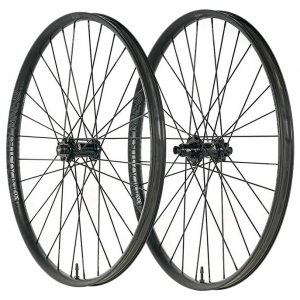
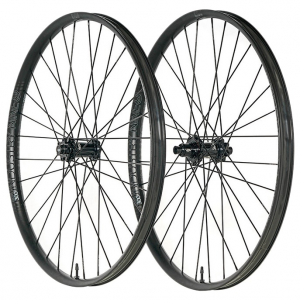
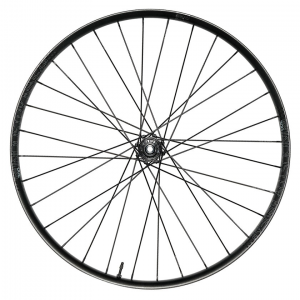
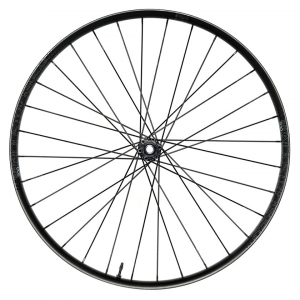
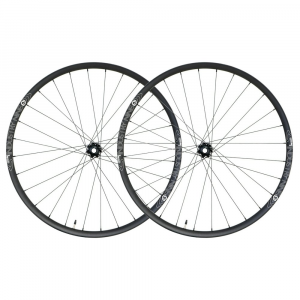
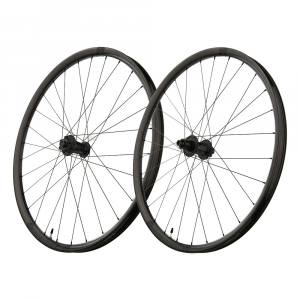


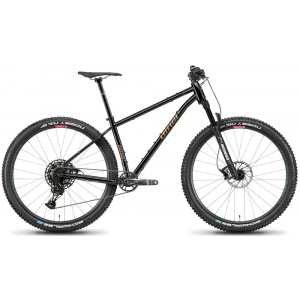







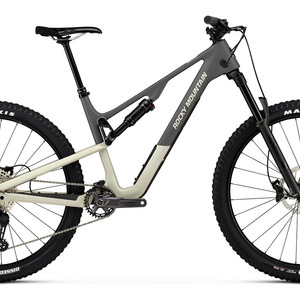

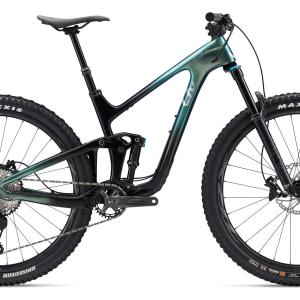









15 comments
Post a reply to: Tested: 2014 Niner WFO 9 - Cake Gnomin Good